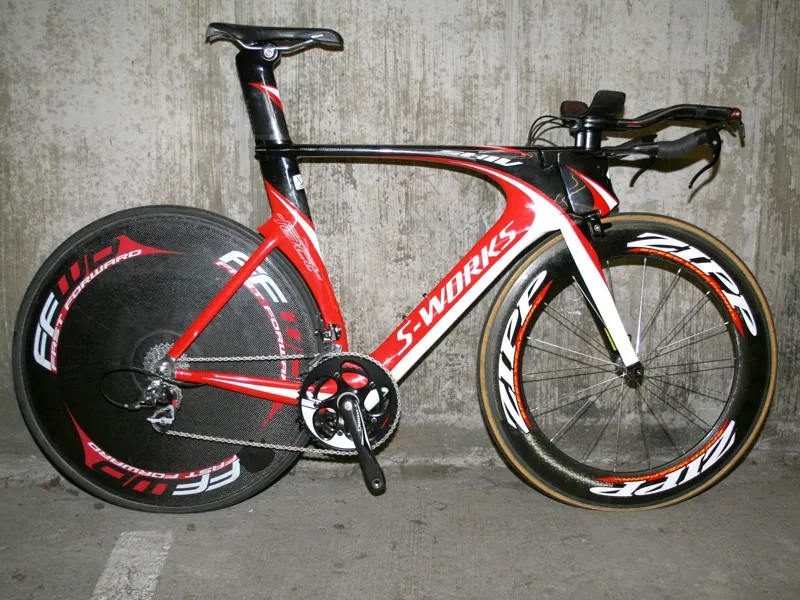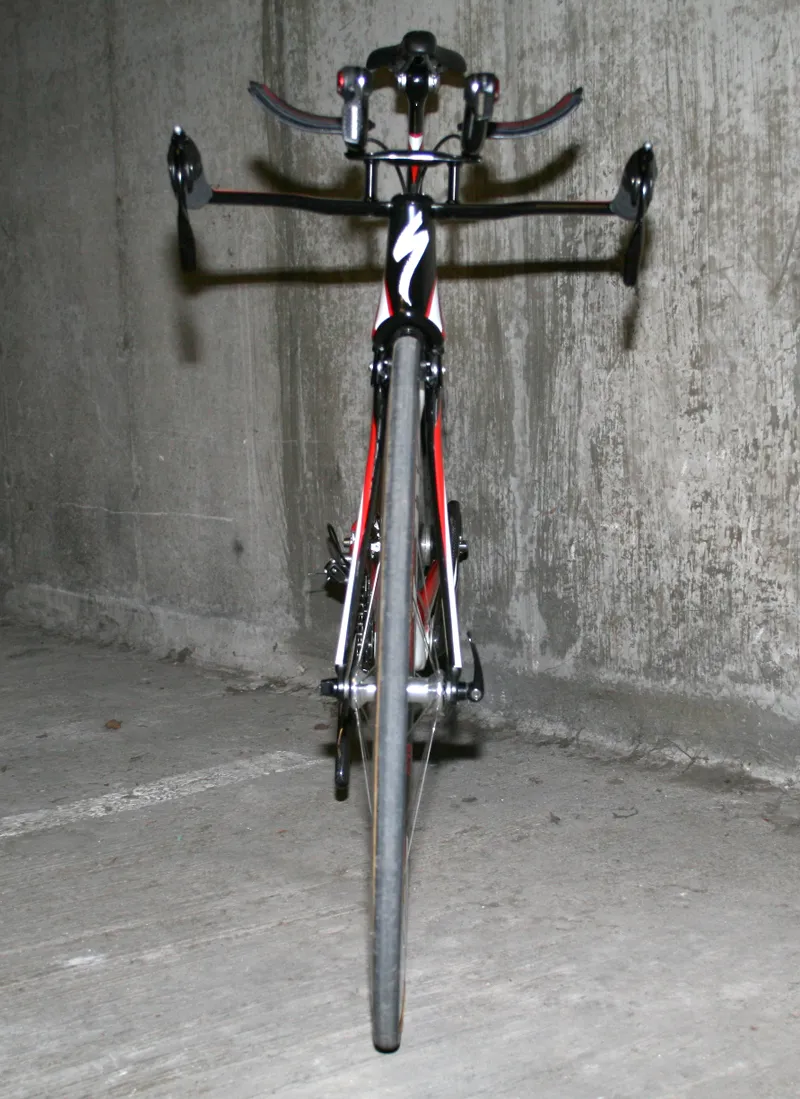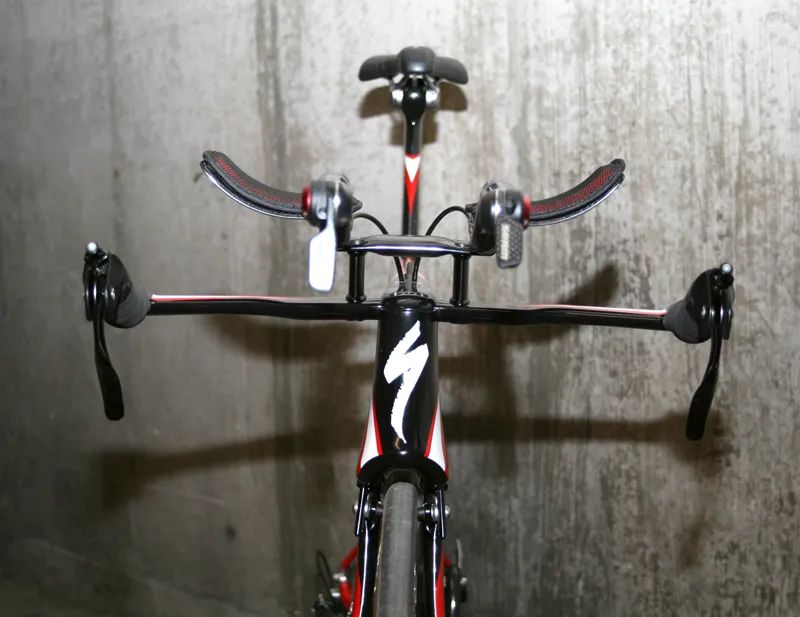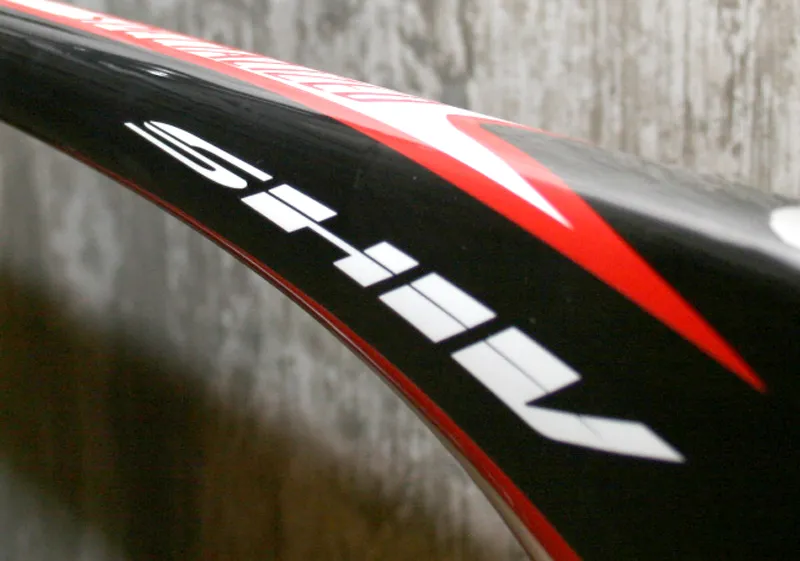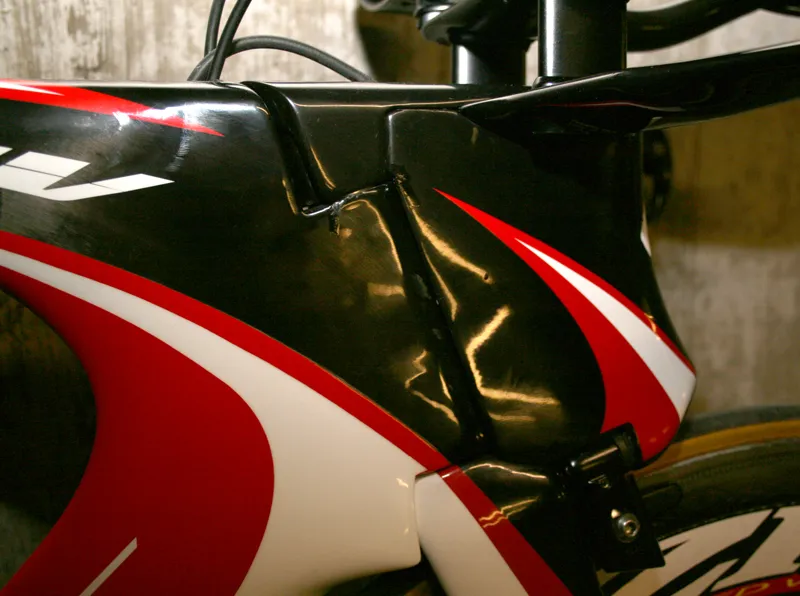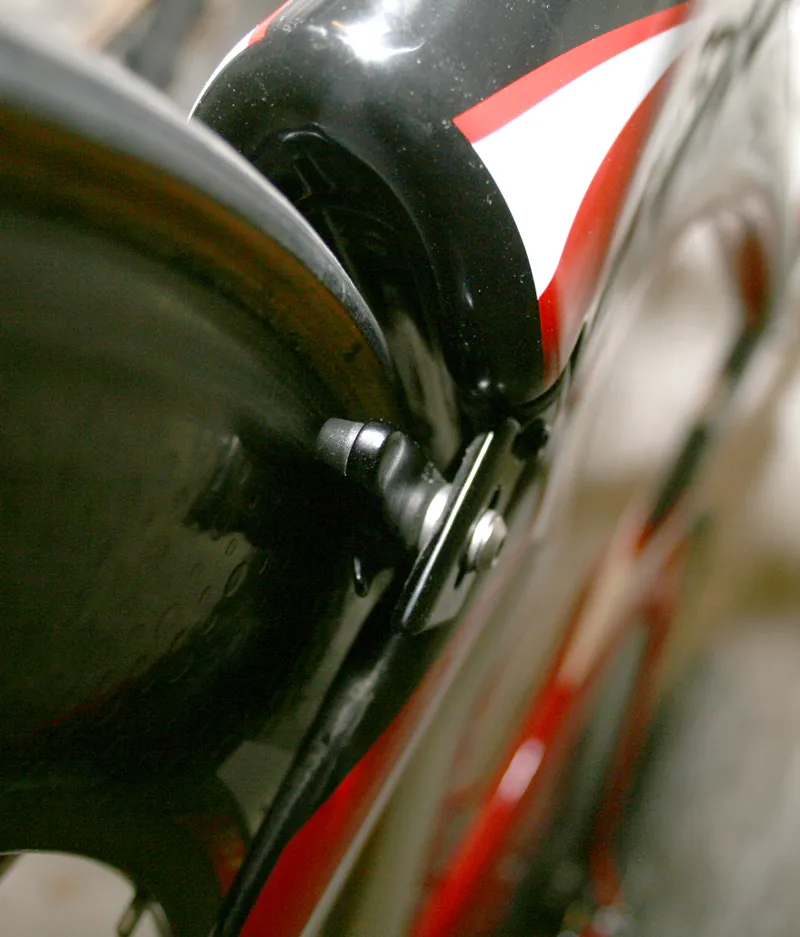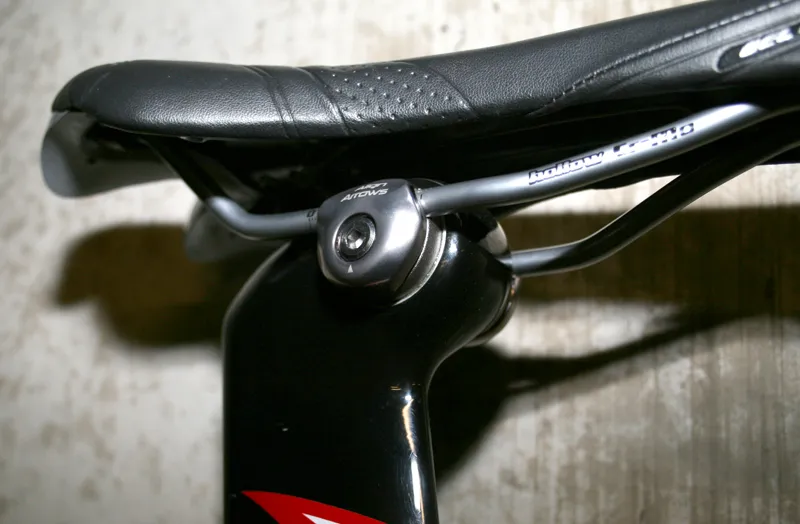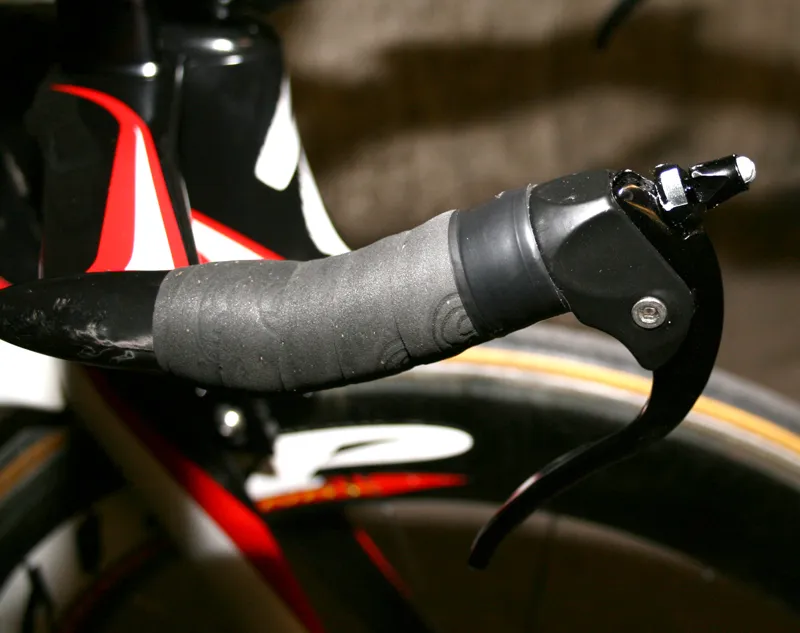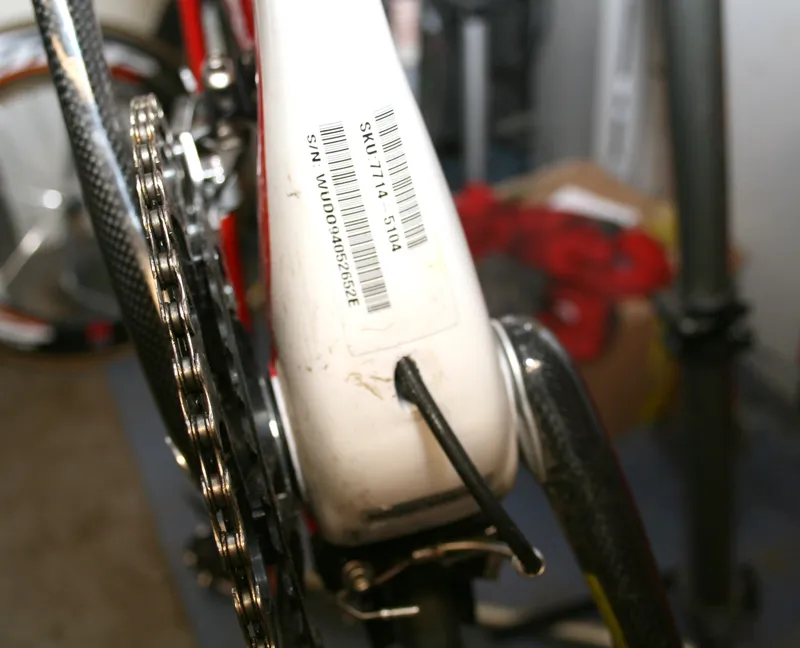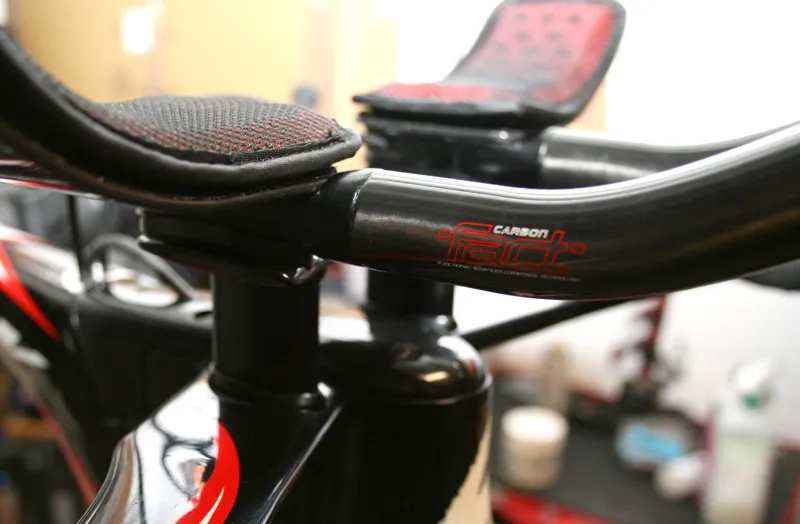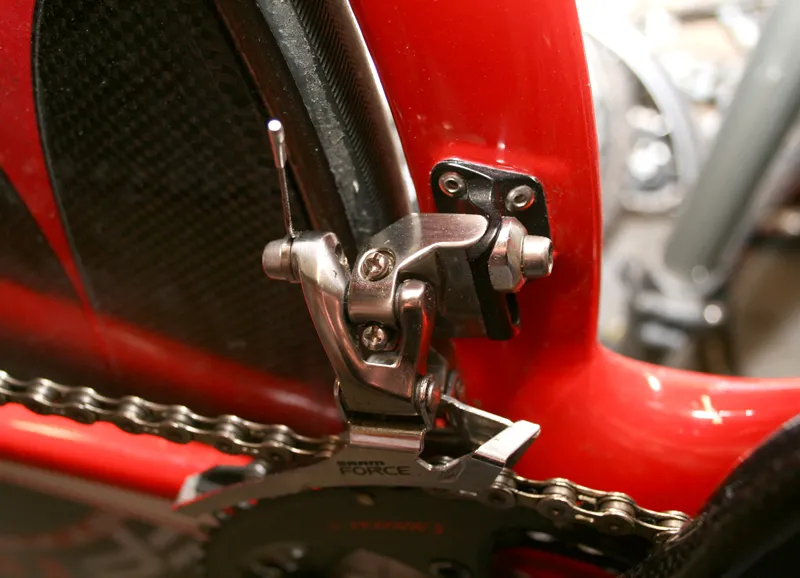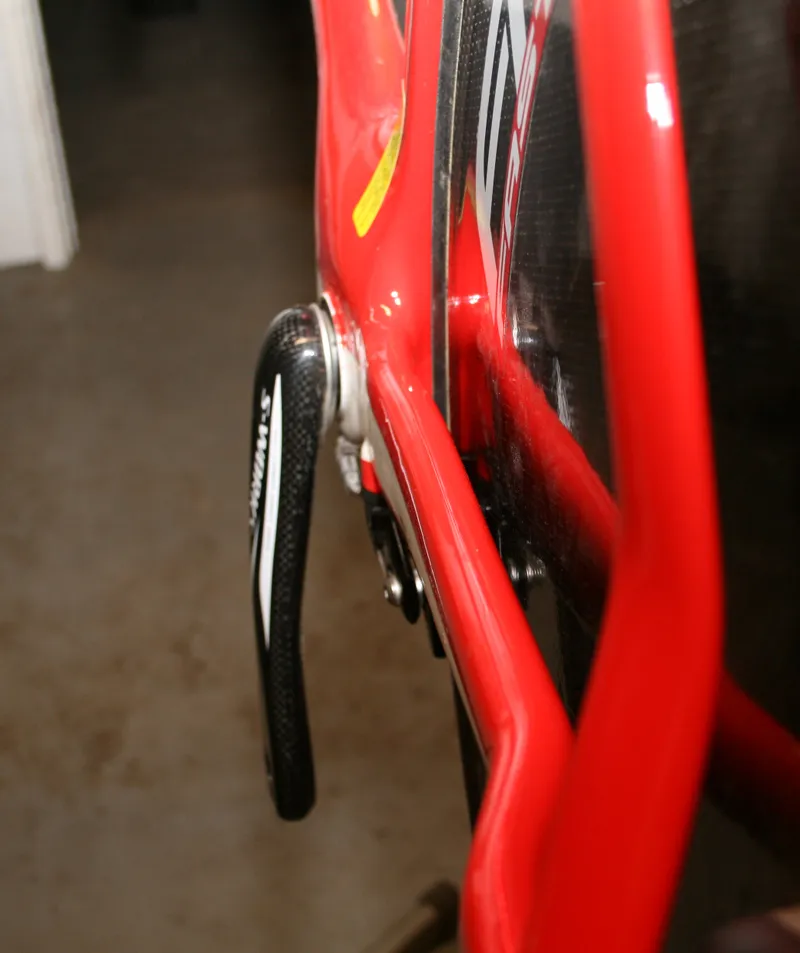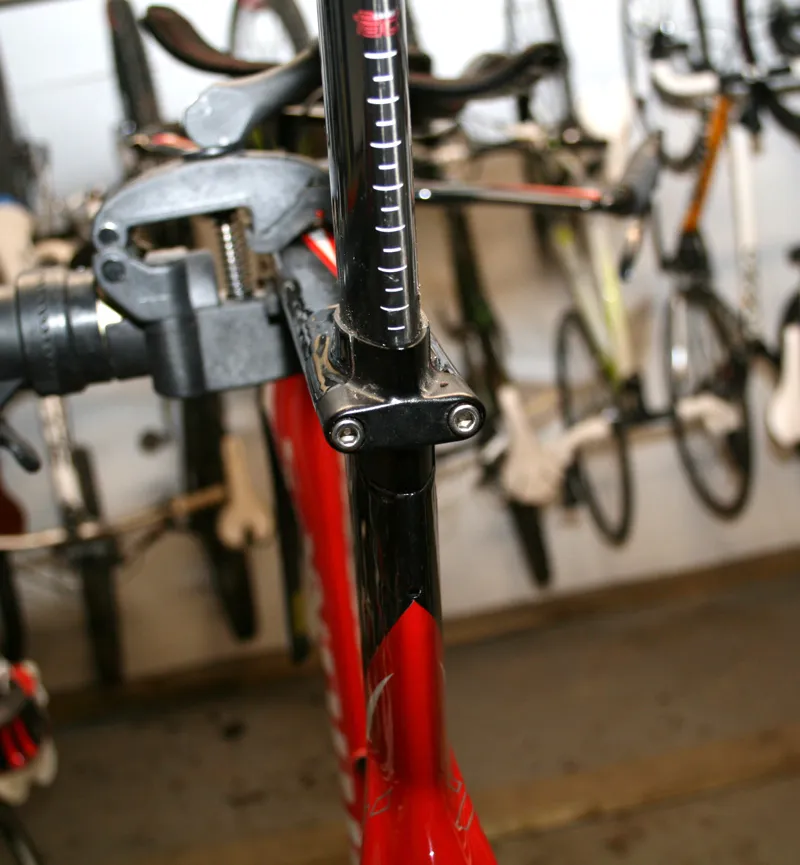The Specialized Shiv is one of the most striking time trial bikes we've seen. Its elongated front end – a combination of a large nosecone and a deep head tube – gives it the appearance of an icebreaker, while the rest of the frame is sleek and streamlined to have minimal impact on the air flowing around it.
We've previewed the Shiv in the past, but we've now got our hands on a live one for testing. It's been squirreled away for the winter in the BikeRadar workshop, avoiding the mud and snow. But it's now March – time to take it out of cotton wool and get it on the road.
The frameset we have is the version ridden by Fabian Cancellara to victory in the 2009 World Time Trial Championships. Back then it was okay under International Cycling Union (UCI) rules, but not any more.
Specialized do have a new UCI (probably) legal version but it's not available to the public yet. UCI legality isn't crucial unless you're going to be racing in UCI races though. The Shiv is legal for most UK and US time trials (save for the national championships) and non-draft triathlons.

Sizing of the Shiv is different to most bikes. Specialized have specified the frame in terms of reach (centre of bottom bracket to effective centre of head tube) and stack (centre of bottom bracket to top of top tube) instead of the usual top tube and seat tube lengths. You'll notice from this diagram that stack height is the same across all models, which means you choose your model on the basis of reach.
We normally ride a 58cm road bike and 56cm time trial bike (Specialized Transition), so the size L (495mm) Shiv was recommended. We had to move the saddle a fair way forward to achieve our preferred position. This is more an aesthetic problem than anything else, but consider buying a size smaller than normal unless you prefer to sit a long way behind the bottom bracket.
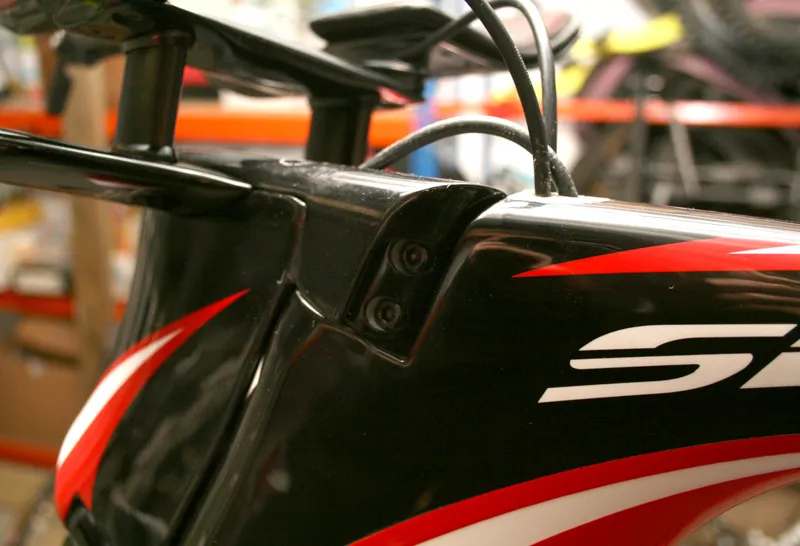
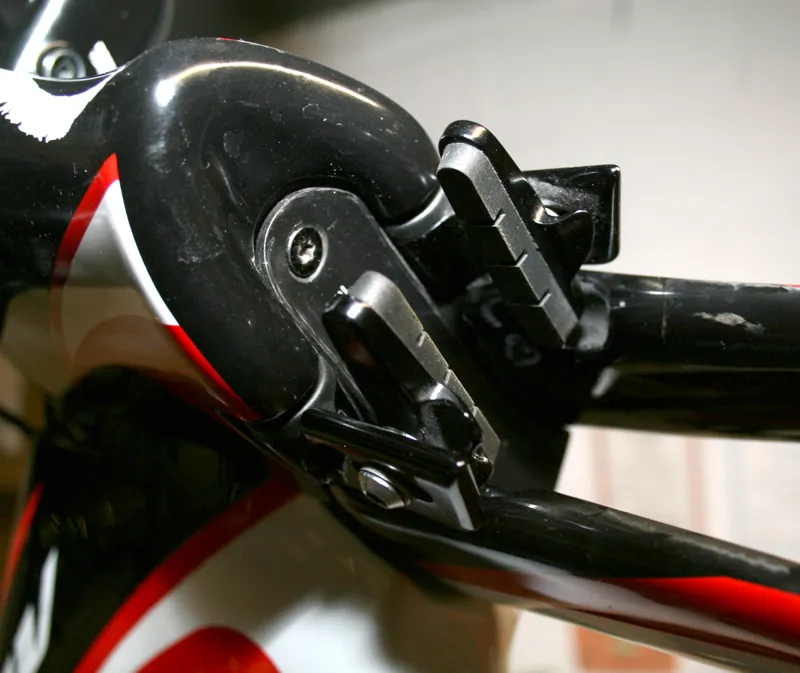
There's a lot of setup work under the bonnet
The module comes with frame, seatpost, fork, brakes and levers, handlebars, extensions and mounts (115mm of height adjustment, three different pad widths, no angle adjustment), and a 53/39 S-Works FACT carbon crankset with an oversize bottom bracket. Setting the bike up from scratch takes time and we don't recommend doing this the day before you're planning on riding it unless you're an expert mechanic.
It's the brakes integrated into the nosecone/front fork, the internal brake and gear cabling combined with setting up the handlebar extensions that'll try your patience. Then again, if you can afford a Shiv (£4,199.99/US$5,499.99) you can also afford to pay a mechanic to build it for you.
We've specced ours with a SRAM Red groupset, a FFWD Powerdisk rear and a Zipp 808 front wheel. All up it weighs 8.15kg/17.96lb and it could certainly be made lighter.
Riding - first impressions
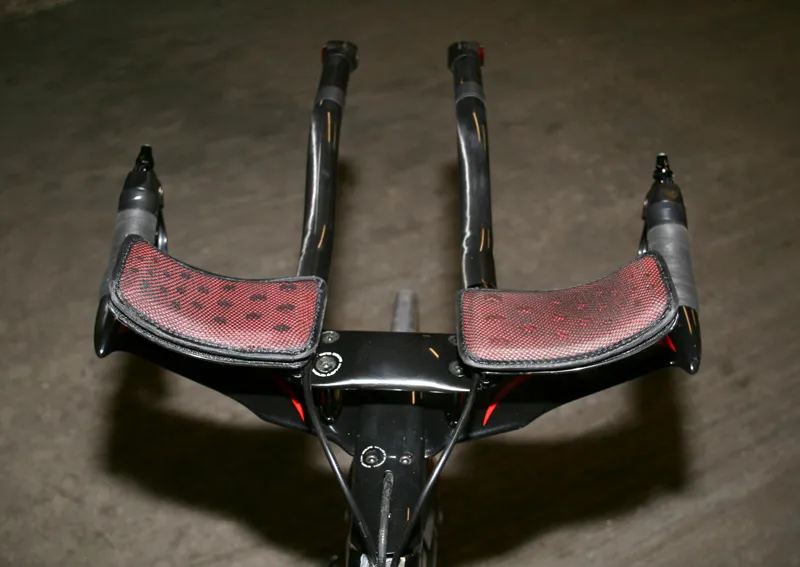
Strap yourself in
The first thing we noticed is how long and low the position is on the cowhorns. It's akin to riding on the drops on a road bike and that's a good thing when it comes to cornering and staying aero and fast on hills. If you like sitting upright to climb, this isn't the bike for you.
Cornering was fantastic, both on the extensions and on the cowhorns. The Shiv is very comfortable taking corners at any speed, and fares better than its predecessor, the Transition, in this department.
On the extensions it was comfortable, fast and stable. The lack of angle adjustability in the extensions (there is a little) was a minor drawback but we didn't feel aerodynamically compromised, although that can only really be determined by a wind tunnel or a good field test.
Power transfer was excellent: the frame is stiff enough to prevent any wheel rub.
In a stiff crosswind, and just using a set of training wheels, we found the Shiv to be more susceptible to side gusts than other bikes we've ridden. Not terrifying but something to be aware of - your body still takes most of the force of the wind. In a race we'd probably run a Zipp 404 instead of an 808 if it was windy.
We'll report back once we've put some more miles on it and raced it.
